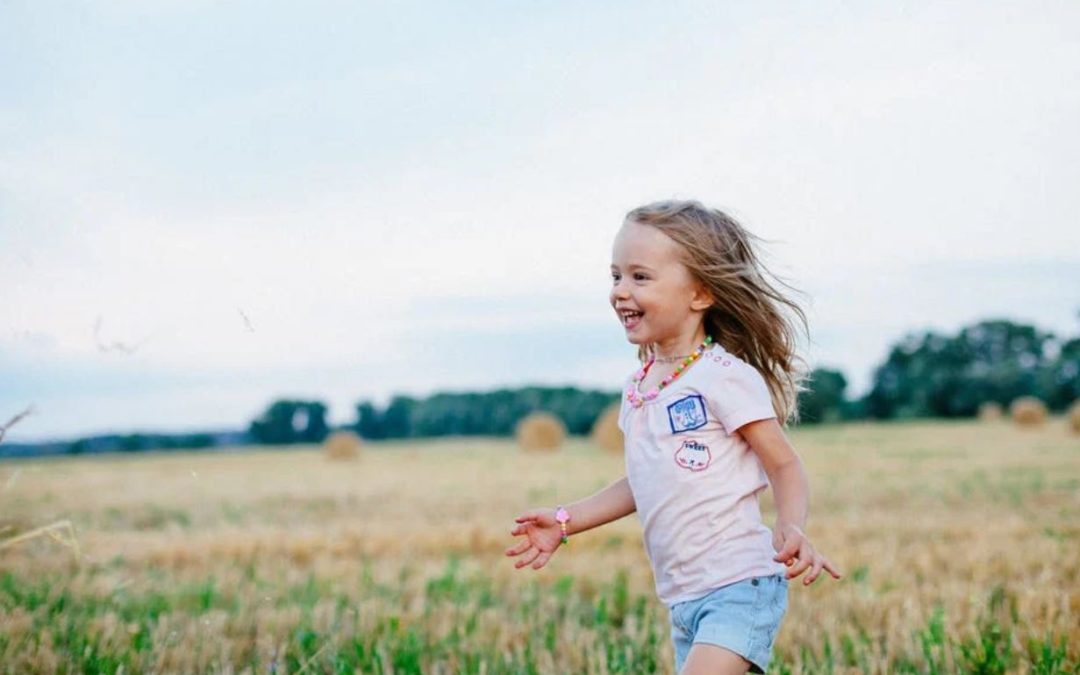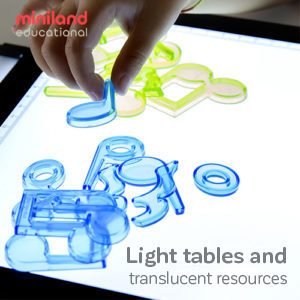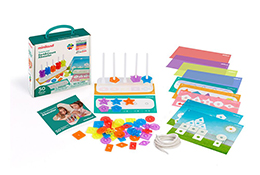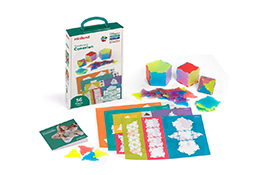Having a highly developed visuo-spatial awareness means you understand where your body is in space, in relation to yourself, others and your natural environment. Mindfulness exercises, like Miniland’s Mindful Kids go a long way to build this critical ability over time. But there are many more ways to make space for its development in your classroom — all it takes is a little imagination and perhaps a strategic learning aid or two. Here are 5 ways to begin:
Use spatial language
Describe the world in spatial terms. Ask your class to describe their environment back to you in this way as well. If you’ve lost something, ask them to describe where to find it by describing it in relation to the objects around it. This could also work out in nature: introduce them to the sights, sounds and smells that make up their natural world by playing a modified game of “I Spy” that has them guessing what you’re referring to only by describing everything else around it! This activity blends especially well into introductory Nature Studies lessons.
Play games
Obstacle courses, pattern recognition games, and puzzles are some excellent examples of games that build visuo-spatial awareness. Some educational toys for children, like Miniland’s Follow the Big Foot, incorporate elements of all of these types of games in one. However, you can also build individual activities into your school day, such as time to play with Lego or building blocks, or use the already-standing playground equipment as the core of an obstacle course challenge.

Make and use maps and models
Visuo-spatial awareness is all about orienting yourself in space. What better way to grow this skill than by giving children the opportunities to make and use maps and models? A simple playground treasure hunt is the perfect opportunity for them to read a map. One follow up cross-curricular classroom activity that develops visuo-spatial reasoning from another perspective, could be an art lesson in which they draw their journey, noting landmarks they passed along the way. If you’re confined indoors due to weather, indoor equivalents like Miniland’s Follow the Big Foot provide all the necessary ingredients for an equally stimulating adventure!
Encourage team sports
Team sports develop a child’s ability to work in groups well, and provides opportunities for them to work out where they are in space in relation to objects (such as a soccer ball) and their teammates. Ball sports are especially important in developing motor coordination skills, that grow the complementary skill to visuo-spatial ability: proprioception. This ability allows a child to know where they are in relation to an object or person and how much effort it will take for them to reach/move it.
Dance and move
Play games like musical chairs, or put some music on and encourage free dancing in your classroom. This helps children develop a sense of themselves as bodies in space ― they need enough self-awareness not to hit anyone or anything. As an added bonus, they also learn about actions conducted at different speeds and rhythms. This segues well into exercises like Miniland’s BBQ Emotions! where you could help them reflect on how moving at different speeds affects their mood.

While nothing happens in isolation, focusing on developing one main skill at a time gives you greater control in developing all of the key developmental areas fairly equally over time. Specialty toy makers, Miniland, have a range of cross-curricular toys and learning aids suited to the Multiplay experience that allows you to adjust one game or toy to focus on almost any of the essential ECD skills development areas, to suit your needs and those of your children. This means that with a few key purchases, you’re able to facilitate an exponential range of activities that cater to a wide range of abilities and ages. Find out more here.



